In a spring escape, I was in San Francisco in late March. We visited museums, parks, and restaurants.
 |
| Roof, California Academy of Sciences |
I had not been to the California Academy of Sciences in more than 20 years. In that period, the building was completely rebuilt, with a green roof. I had been doubtful about green roofs--where people grow plants on the roof. I know they have been used for millennia in parts of Europe, but those are wetter climates than San Francisco. So I wondered about watering and keeping plants alive in shallow soils. Or, if the soils aren't shallow, the weight on the roof.
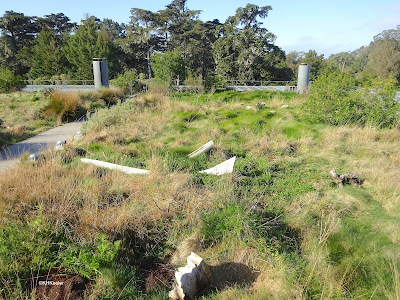 | |||||
| Roof, California Academy of Sciences | | | |
Cal Academy's green roof was planted as the new building was finished, in 2008. When I saw it, it was more than a decade old, very well-established. They boasted of it; it cools the building, captures rainwater reducing runoff, and provides habitat for birds and insects, all without taking up space that is so precious in cities.
It certainly looked good:
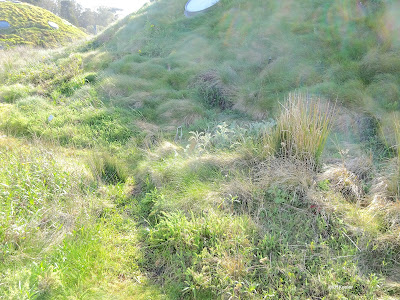 |
 |
| Grasses |
Healthy ferns
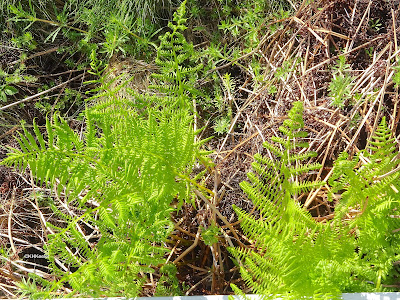 | ||
Flowers in March
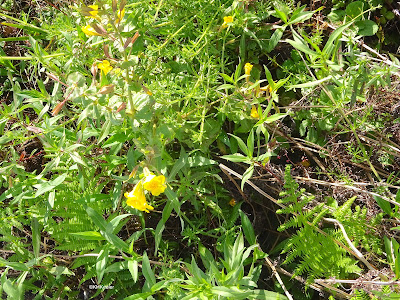 | ||||
| monkey flowers, Mimulus |
Their sign about maintenance said there was an ongoing need to remove weeds that appear. I wondered--but found no information on--what other ongoing problems they coped with. It is a pretty general ecological principle that every solution causes new problems; the trick is to choose wisely.
This is a working roof, venting heat from the building, channeling and capturing rain water. The signs say it captures 98% of the rainfall, an important thing in a city where runoff can be a problem. The plants surround sky lights and solar panels
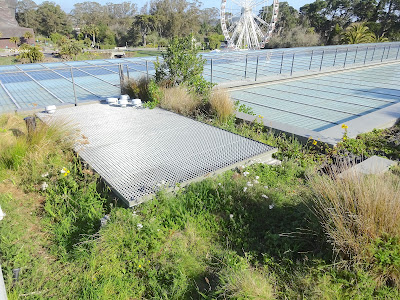 |
and sensors for monitoring wind, rain, and temperature.
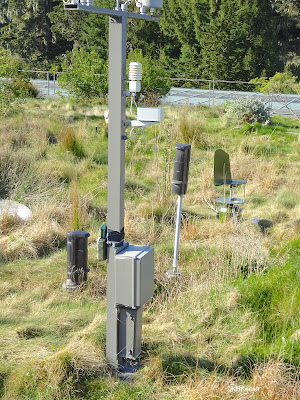 |
The Cal Academy roofs were built as hills and so are more complex
than most green roofs. But the little hills mean some places are
relatively shady, others more exposed, fostering a more diverse
community of plants. Since Cal Academy is a science museum, they are of
course studying the impact, though I could find neither publications nor press releases on developments since 2008.
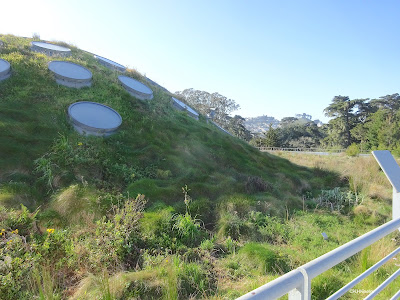 |
| Hills of the Cal Academy roof |
A roof like this is a big project; the roof has multiple layers of material to allow it to grow plants without leaking water. It also needed to be strong to support the weight. San Francisco has multiple suggestions for green roofs (link), but it is evident that building to include a roof garden is easier than retrofitting an existing roof. A green roof is more expensive to build than a traditional roof, but it also insulates better, controls water better, and provides a variety of other benefits to the owners and the community.
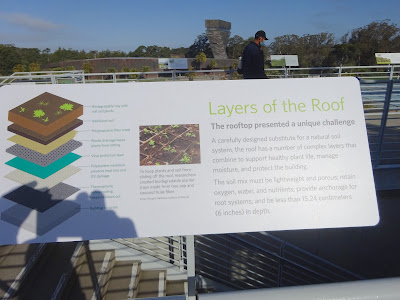 |
Advice for choosing plants for a green roof recommends heat and drought tolerant shallow-rooted plants. Cal Academy tried many, producing the mix you see today. A lot are California natives, 90 species the sign said, for example, California poppy, monkey flower, California asters, and yarrow. But roof gardeners also especially liked succulents such as sedums, tough and shallow-rooted, even though most are non-native.
As this sign reports, there is no shortage of attractive plants that grow well on the roof.
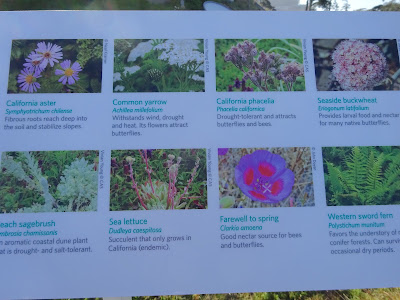 |
Back at my hotel near Chinatown, my 9th floor room had a balcony just big enough for a pair of lounge chairs and a few plants in a box. Honey bees were visiting the rosemary. From where I stood, I could see no other green plants in any direction, let alone flowers. I was impressed; if you provide flowers, urban bees will find them.
 | ||
| Honey been in middle of flower on rosemary. |
One more photo from the California Academy of Sciences roof
Comments and corrections welcomed.


No comments:
Post a Comment